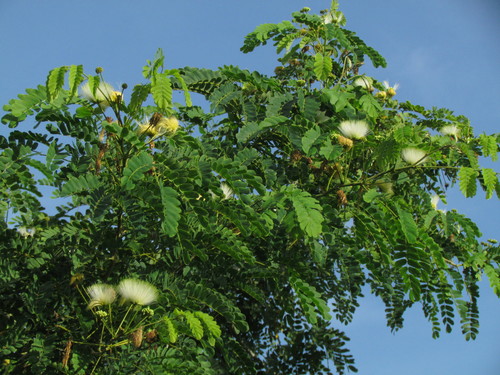Botanical name: Albizia lebbeck | Hindi: सिरिस | Marathi: शिरस

About
The Shirish, known as सिरिस in Hindi and scientifically as Albizia lebbeck, is a majestic, fast-growing tree reaching up to 30 meters tall. Its expansive crown boasts graceful, bipinnate leaves with delicate leaflets, creating a dense, feathery canopy. This leafy haven shades the understory and offers a cool retreat. During spring, fragrant, white flowers with numerous long stamens bloom in clusters, adding a sweet aroma to the air. Later, flat, brown pods develop, containing several flat, brown seeds. The Shirish thrives in tropical and subtropical climates, adapting to diverse soil types and tolerating moderate drought.
Interesting Facts


Anandvan Trivia Quiz
Question 1: Why am I called as Shak Shak tree in West Indies?
Answer:The Shirish earns the nickname “Shak Shak” in the West Indies due to the sound its seed pods make when shaken. As the flat pods dry and mature, they contain several loose seeds that rattle inside, creating a distinct “shak-shak” sound when the wind blows or the tree is touched. This unique feature gives the tree its playful nickname in the region.
